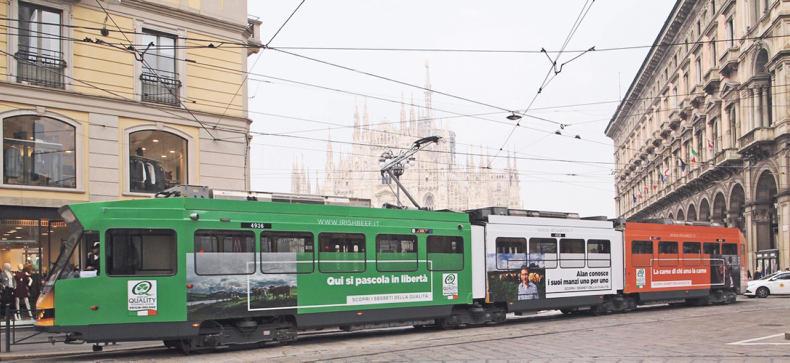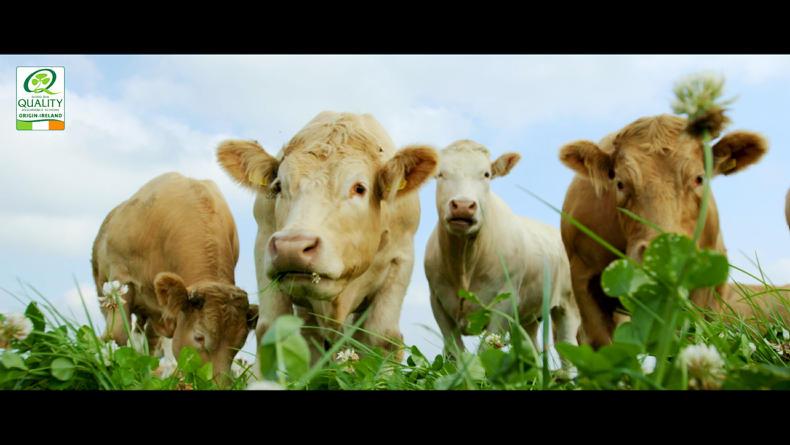The combined value of Irish meat and livestock exports reached a record €3.9bn last year, an increase of 8% on 2016. This equates to almost one-third of Ireland’s total food exports (€12.6bn), which underlines the pivotal role of the industry.
The overall value of Irish beef exports (including offal) increased by 5% to €2.5bn. It is particularly encouraging that this growth reflected an increase in average prices as well as higher supplies. Cattle throughput reached a 14-year high of 1.75m. head, although the impact of higher numbers was partly offset by a decline in carcase weights. For the year, Irish R3 steer prices rose by 1.6% or 6c/kg, while O3 cull cow prices recovered by 5.7% or 17c/kg.
During the final two months of 2017, weekly slaughterings reached a peak of over 40,000 head. Prime cattle prices actually increased by 7.5%, or 28c/kg over this period, reflecting robust demand from EU and international markets. The UK remains the dominant destination, taking 51% of Irish beef exports. Continental Europe accounted for 43% of volumes, while non-EU markets (including the Philippines and Hong Kong) grew strongly to 6%. Some further increase in Irish cattle availability is expected in 2018. EU forecasts suggest a 0.5% rise in beef consumption, and for continued strong demand internationally for exports of beef, offal and livestock.
At the livestock seminar, exporters and other key stakeholders received presentations from Bord Bia on market developments and customer insights, while speakers from the Department of Agriculture, Food and the Marine outlined the situation regarding transport, market access and certification. Animal Health Ireland outlined plans for a national IBR strategy, which would further enhance the health status of Irish animals.
During 2017, live cattle exports increased by almost 30% to 188,000 head. Calves represented the largest export category, increasing by 40% to reach over 100,000 head. Exports of weanlings and store cattle increased by 20% to over 59,000 head, which included more than 30,000 animals shipped to the Turkish market.
Demand for calves looks set to start off strongly in the Netherlands and Spain: the two principal markets for Irish calves. In the Netherlands, the veal sector is benefitting from a buoyant trade for this high-priced meat product, combined with low milk powder prices. In Spain, finished cattle prices have reached their highest levels for many years. Spanish meat processors are having to compete for supplies with live exports into markets like Libya, the Lebanon, Algeria and Turkey.

During the month of November, Bord Bia gave its Irish beef consumer campaign its first major airing in Milan – Italy’s most affluent region. The core message of this campaign focuses on freedom, which resonates with the free-range and grass-based characteristics of Irish beef farming. Irish beef already enjoys an excellent reputation in the Milan area, with premium branded Irish beef found in the main retail chains and increasingly on restaurant menus. Bord Bia’s objective has been to support increasing sales of premium Irish beef, positioned as a unique and high-value product.
The campaign combined both traditional outdoor and social media advertising. Billboard advertising and Irish beef decorated trams engaged a broad target audience, while social media support focused on the core Italian Irish beef consumers with a 30-second video clip about Irish beef, linking to www.irishbeef.it
Feedback from the campaign has been positive, with significant sales growth reported. The reach of the campaign is estimated at over 35m touch points for the outdoor campaign and 4m impressions for the digital campaign. A testimony of the success of Irish beef in Italy has been that, despite a 2% reduction in overall beef imports to Italy last year, imports of Irish beef increased by 6%.
 Plans are well under way for Ireland’s largest sustainable food and drink trade event, Marketplace International 2018, with over 150 Irish food and drink exporters already signed up to participate.
Plans are well under way for Ireland’s largest sustainable food and drink trade event, Marketplace International 2018, with over 150 Irish food and drink exporters already signed up to participate.
This promises to be Bord Bia’s largest Marketplace event to date, with in excess of 600 buyers expected to attend.
As in previous years, Marketplace will enable Irish food and drink exporters to develop relationships with retailers, foodservice buyers and distributors from across the globe with the ambition of writing new, mutually beneficial, sustainable business. The key highlight will be on 12 April in the RDS, Dublin, when participating Irish companies will get to meet the buyers during several thousand pre-scheduled “speed dating”-style meetings taking place throughout the day.
The international buyers will also participate in various targeted itineraries coordinated by Bord Bia to showcase Ireland’s world-class agri-food industry. Visits will include farms, factories, retail stores and manufacturing facilities throughout the country who are participating in Origin Green.
For more information please visit www.irishfoodanddrink.com/marketplace

The Dutch market, again Ireland’s third-largest export market for beef in 2017 (valued at €193m), was prioritised for additional promotional resources from the Department of Agriculture, Food and the Marine last autumn, to support greater market diversification. This enabled Bord Bia to execute an extensive array of activities in the Netherlands. One key feature was the production and airing of the first ever Irish beef TV advertisement to be transmitted abroad, featuring beef producer Tim Meagher from Co Tipperary. It was broadcast during November and December to an estimated 47 million Dutch consumers, and traffic to the www.irishbeef.nl website increased by over 1,000 additional visitors each day that the ad was shown. Visitors to the optimised website find recipes and tips from top chefs as well as detailed information on Ireland’s suckler-based beef production system and, most importantly, where to buy Irish beef in Dutch stores.